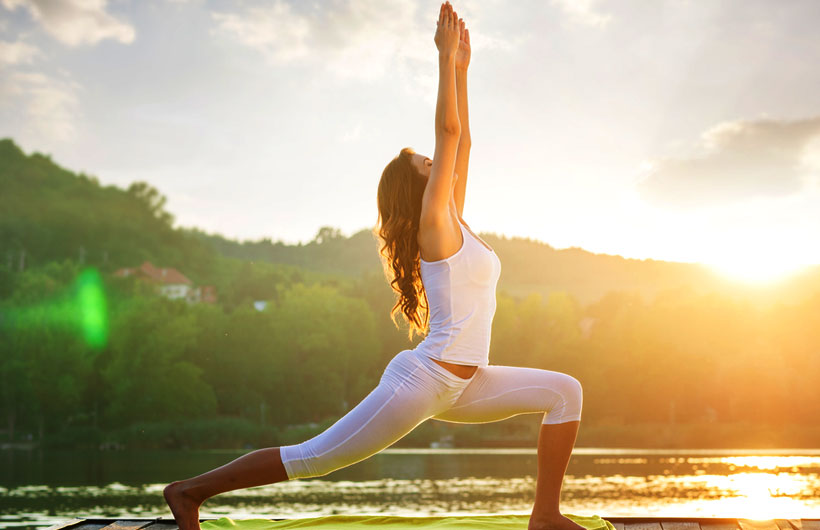Introduction.
Exercise is a fundamental aspect of a healthy lifestyle, encompassing a wide range of physical activities aimed at improving fitness, strength, flexibility, endurance, and overall well-being. Whether you're a fitness enthusiast, an athlete, or someone looking to improve your health, incorporating regular exercise into your routine offers numerous benefits. Exercise is not a one-size-fits-all activity. There are countless ways to move your body and improve your health, each offering unique benefits and challenges. Let's dive into the diverse world of workouts and explore some of the different types of exercises available.
Cardiovascular Exercise
Cardiovascular exercise, often referred to as cardio, is any activity that raises your heart rate and gets your blood pumping. It's essential for maintaining a healthy heart and improving overall endurance. These exercises engage large muscle groups in repetitive motions, leading to increased breathing and heart rate. Some popular forms of cardiovascular exercise include:
Running/jogging: Whether you prefer hitting the pavement or logging miles on a treadmill, running is a classic cardio workout that burns calories and strengthens your legs and core.
Riding a bike: Riding a bike, whether on a stationary cycle in a spin class or on the trails, is a low-impact exercise that strengthens the lower body and cardiovascular system.
Swimming: Swimming is a low-impact, full-body exercise that is good for the joints. It increases flexibility, strengthens muscles, and increases cardiovascular fitness.
Jumping rope: A simple yet effective cardio workout, jumping rope burns calories, improves coordination, and strengthens the lower body.

Benefits
- Cardiovascular exercise strengthens the heart muscle, allowing it to pump blood more efficiently throughout the body.
- Cardio exercises increase breathing rate and lung capacity, enhancing the delivery of oxygen to the muscles and improving respiratory efficiency.
- Cardiovascular exercise is an effective way to burn calories and lose weight or maintain a healthy weight.
- Regular cardiovascular exercise releases endorphins, neurotransmitters in the brain that promote feelings of happiness and well-being.
Strength Training
Strength training, also known as resistance training or weight training, involves using resistance to build muscle strength, endurance, and power. It's a crucial component of overall fitness that offers numerous benefits beyond just gaining muscle mass. To increase muscle strength, power, and endurance, resistance training is used. It's essential for preserving bone density and avoiding injury in addition to being only about bulking up. Here are some examples of exercises for strength training:
Weightlifting: Weightlifting targets particular muscle areas to enhance strength and definition, whether done with machines, dumbbells, or barbells.
Bodyweight exercises: To increase strength and enhance general fitness, perform exercises like lunges, squats, and push-ups using your body weight as resistance.
Resistance bands: Resistance bands are versatile tools that provide resistance in various directions, making them ideal for targeting specific muscle groups and improving flexibility.
Functional training: This type of strength training focuses on movements that mimic real-life activities, improving balance, coordination, and stability.

Benefits
- The primary goal of strength training is to stimulate muscle growth and improve strength. By challenging your muscles with resistance, whether it's from weights, resistance bands, or your own body weight, you can increase muscle mass and enhance muscular endurance.
- Strength training is beneficial for bone health, as it helps increase bone density and reduce the risk of osteoporosis and fractures, especially in older adults.
- Building lean muscle mass through strength training can boost your metabolism, as muscle tissue burns more calories at rest compared to fat tissue.
- Strengthening muscles and connective tissues through resistance training can help prevent injuries by improving joint stability, flexibility, and range of motion.
Flexibility and Mobility
Flexibility and mobility exercises help maintain and improve the range of motion in your joints, preventing injury and enhancing overall performance. Flexibility and mobility are essential components of physical fitness that contribute to improved movement quality, joint health, and overall well-being. Incorporating regular flexibility and mobility exercises into your fitness routine can help reduce the risk of injury, enhance athletic performance, alleviate pain and discomfort, and improve overall quality of life. Some common flexibility and mobility exercises include:
Stretching: Stretching exercises lengthen and loosen tight muscles, improving flexibility and reducing the risk of injury. Static stretches, dynamic stretches, and yoga poses are all effective forms of stretching.
Foam rolling: Foam rolling, sometimes referred to as self-myofascial release, is a technique in which tense muscles are massaged, and tension in the fascia (the connective tissue that envelops muscles) is released.
Mobility drills: Mobility drills focus on improving joint mobility and range of motion through controlled movements and exercises targeting specific joints and muscle groups.
Yoga and Pilates: Both yoga and Pilates combine strength, flexibility, and mindfulness, offering a holistic approach to improving physical and mental well-being.

Benefits
- Flexibility and mobility exercises help increase the range of motion in joints, allowing for smoother and more efficient movement. This can enhance performance in both athletic activities and everyday tasks.
- Flexible muscles and joints are less prone to strains, sprains, and other injuries. By improving flexibility, you can reduce the likelihood of overuse injuries and improve overall joint stability and resilience.
- Flexibility training can help correct muscular imbalances and improve posture by releasing tight muscles and reducing tension in the body. This can alleviate discomfort and pain associated with poor posture and prevent long-term musculoskeletal issues.
- Stretching exercises promote relaxation and blood flow to the muscles, reducing stiffness, tension, and soreness.
Conclusion
Regardless of age, physical ability, or personal tastes, there is something for everyone in the wide and varied world of exercise. There's an exercise style that's perfect for you, whether you prefer the intensity of a high-intensity interval training (HIIT) session, the tranquility of a yoga class, or the friendship of group fitness. You can enjoy the advantages of better health, fitness, and general well-being by mixing up your exercise regimen. So whether you're working out on a bike, a yoga mat, or sneakers, the most important thing is to stay moving and enjoy the path towards a better self.



You must be logged in to post a comment.